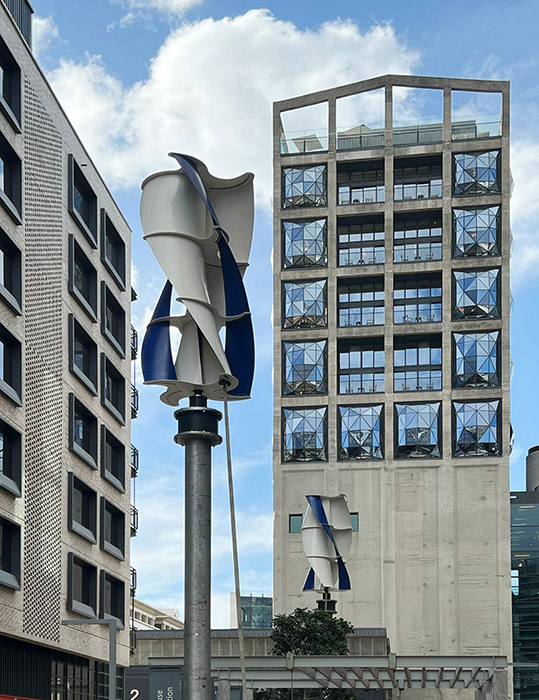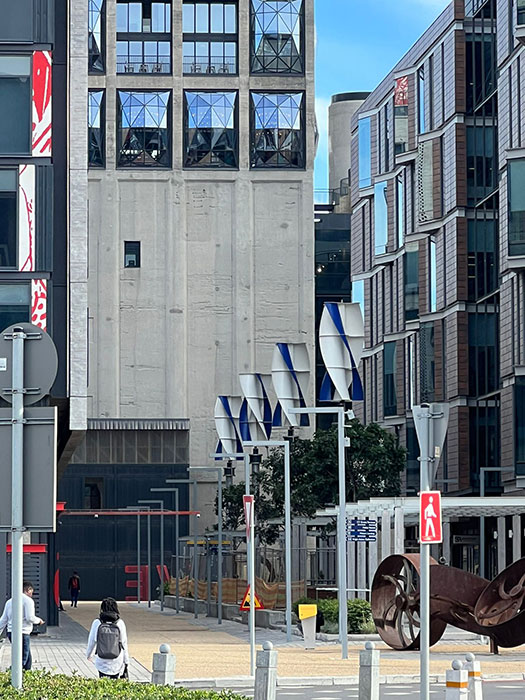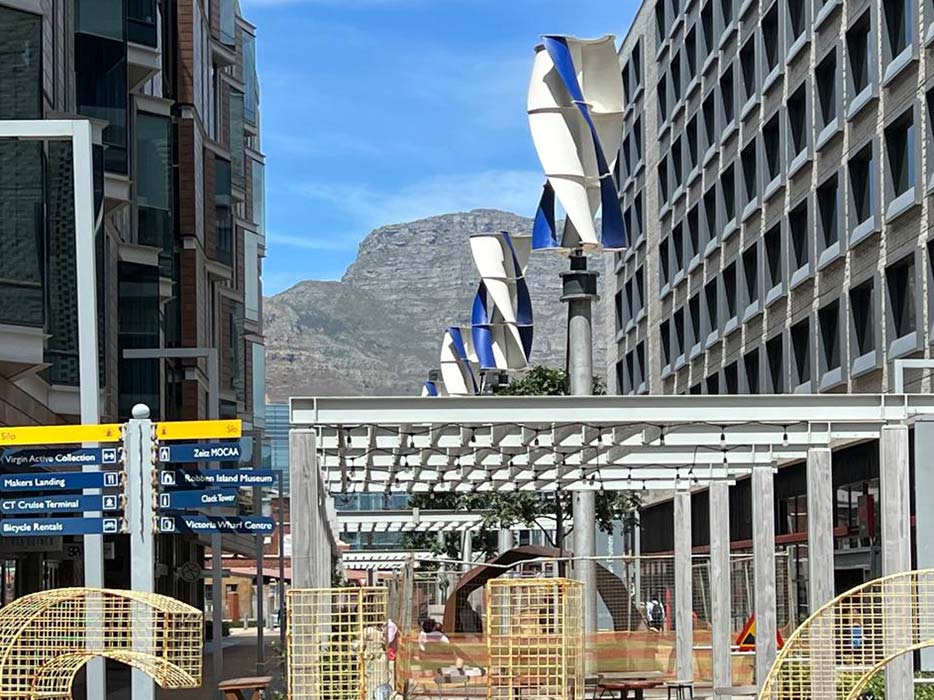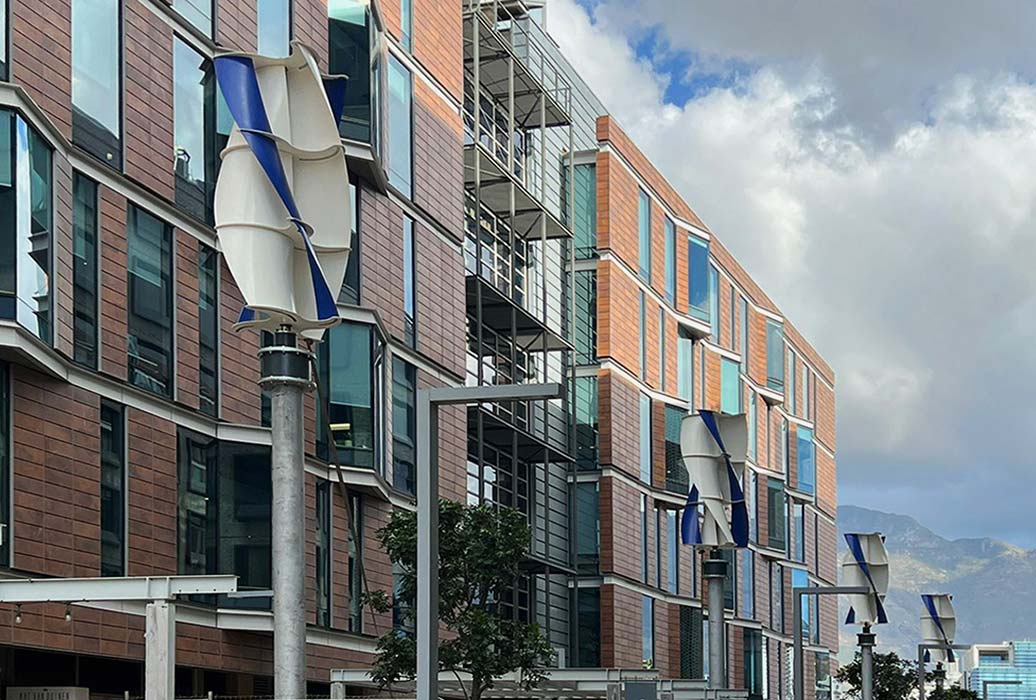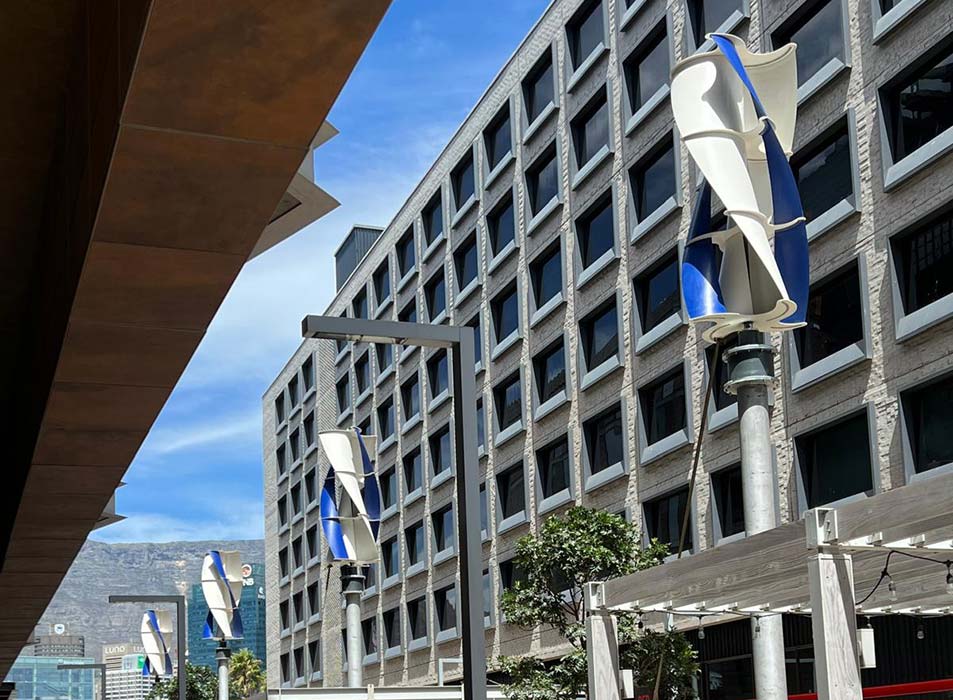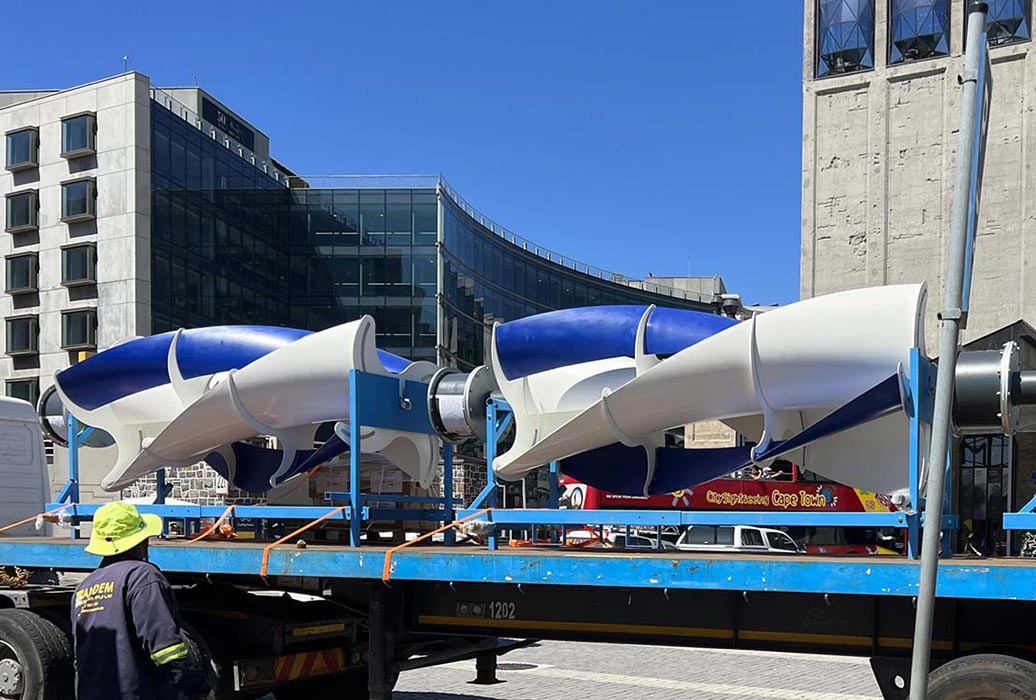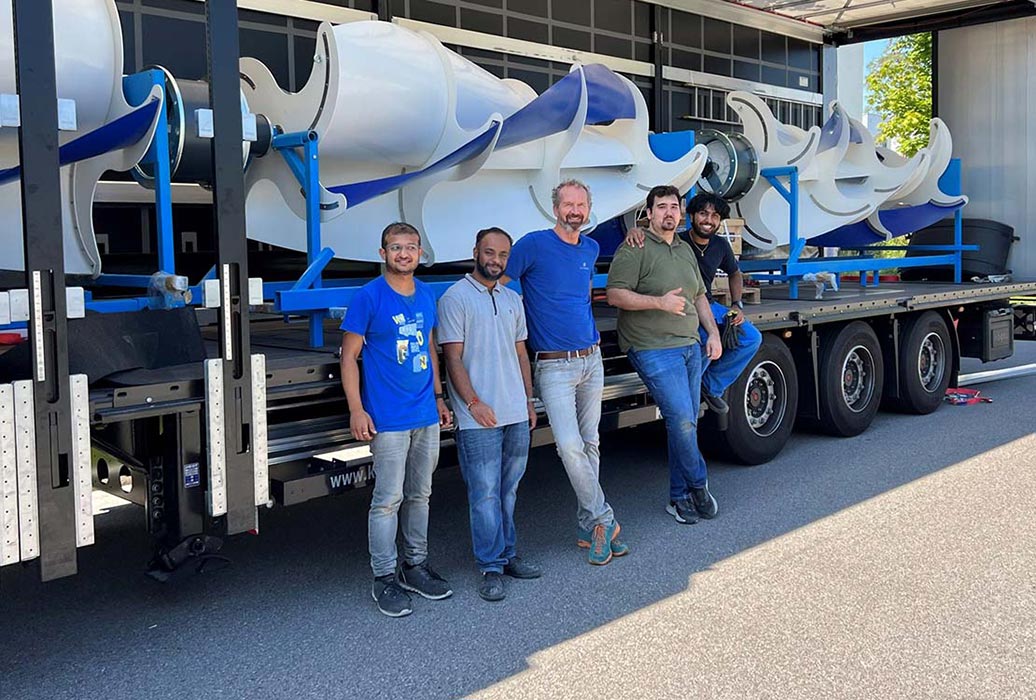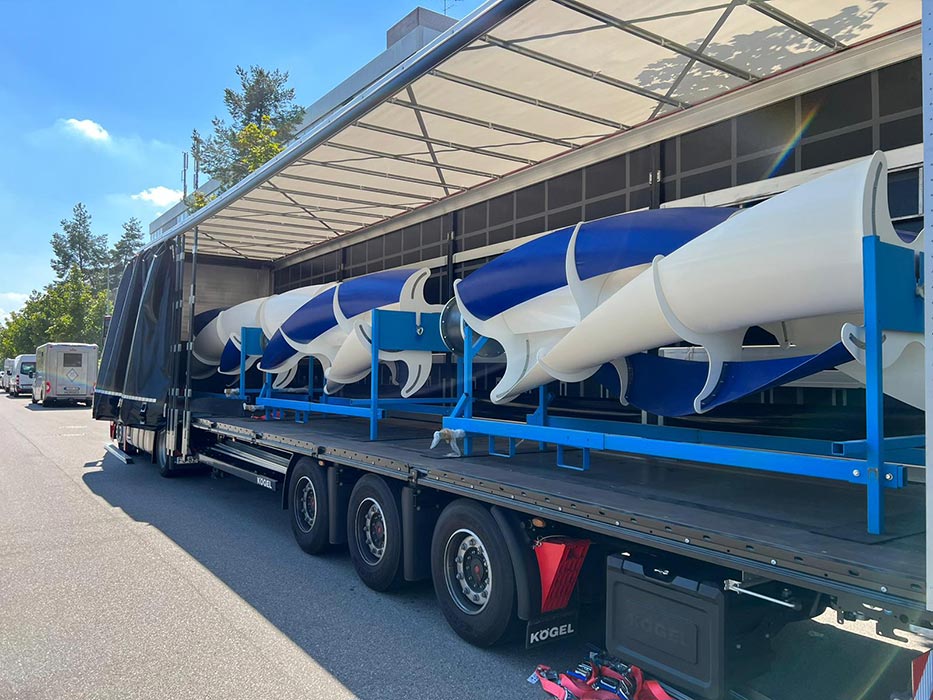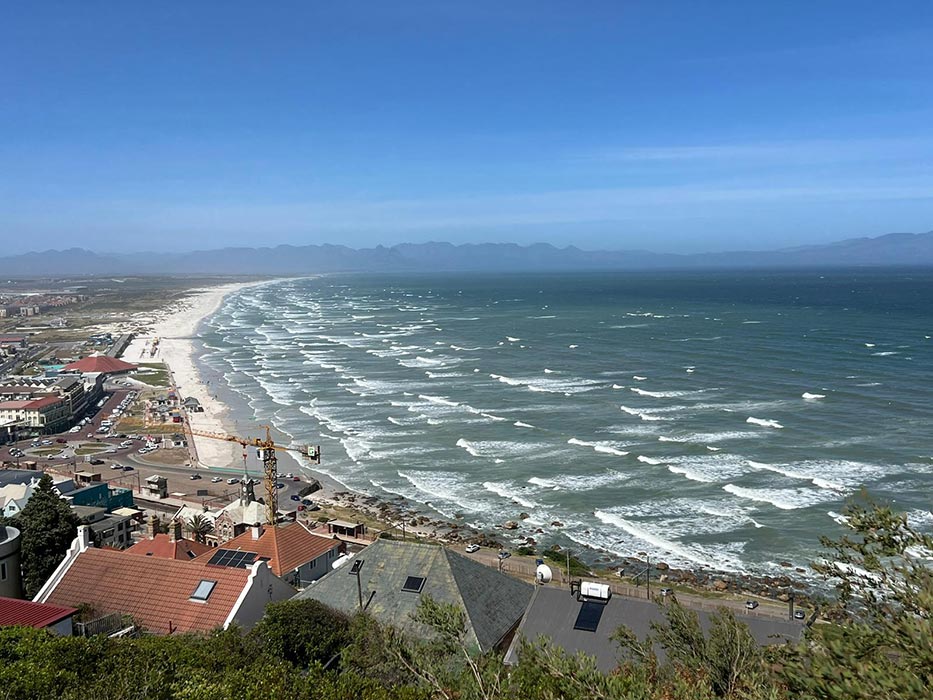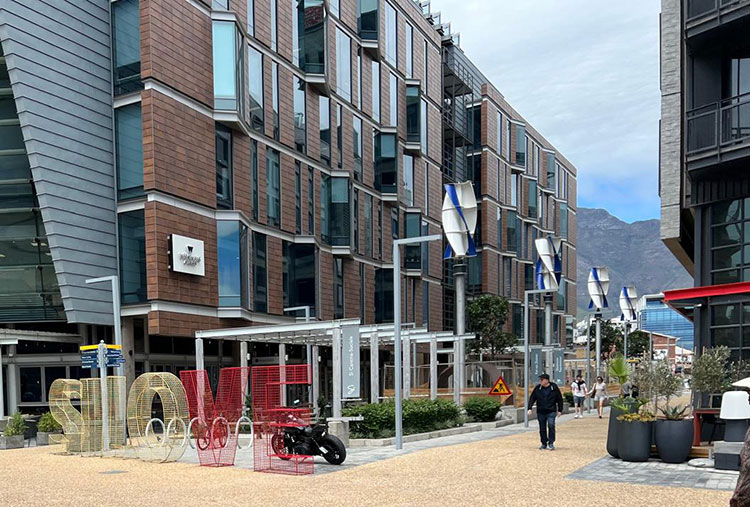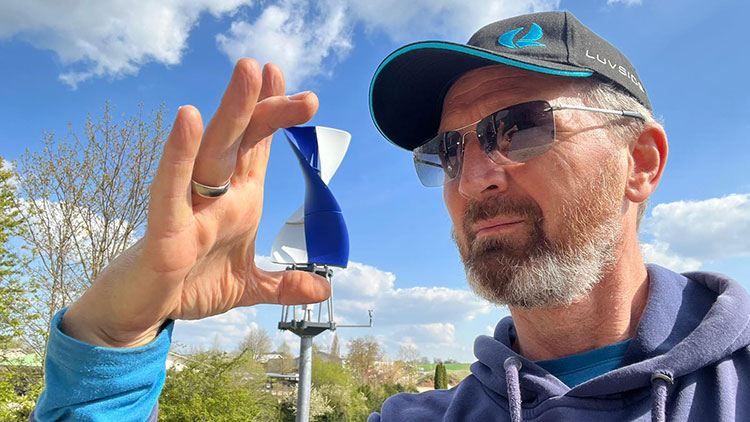
An alternative to diesel generators are small wind turbines, as developed, produced and marketed by us. Our wind turbines can be used to compensate for power outages in an environmentally friendly and quiet way.
Rolf Hoffmann
CEO LuvSide GmbH
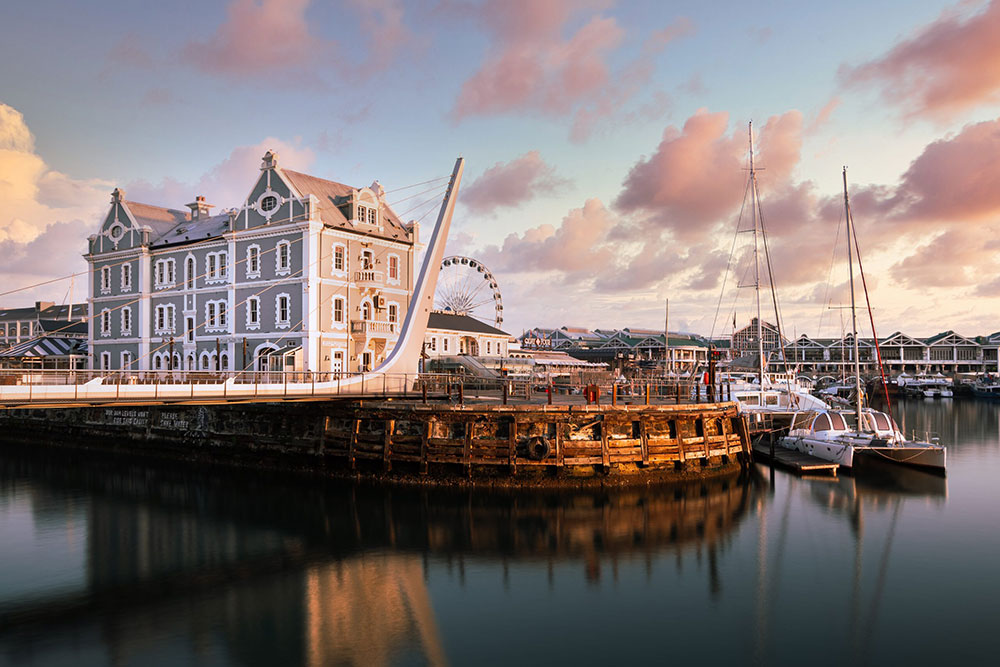
V&A Waterfront in Cape Town – our location for four LS Double Helix 1.0 turbines
The “Victoria & Alfred” Waterfront in Cape Town (A&V Waterfront Cape Town) became the most important tourist attraction in Cape Town in the early 1990s. In the evenings and at weekends, half the city meets at the former harbour and both visitors and locals appreciate the cheerful and informal atmosphere of this attractive shopping, business, and residential area by the sea.
A variety of different stores, restaurants and cafés are lined up around two huge harbour basins. Visitors stroll through the hustle and bustle and dozens of excursion boats and cruise ships moor at the harbour’s jetties, stopping off in Cape Town Harbor on their African tours.
In addition to the windy location by the sea, the diverse audience also spoke in favour of this location. With the installation of our four LS Double Helix 1.0 turbines, we are reaching both the local population and tourists from all over the world to make them aware of small wind turbines and raise their awareness of renewable energies.
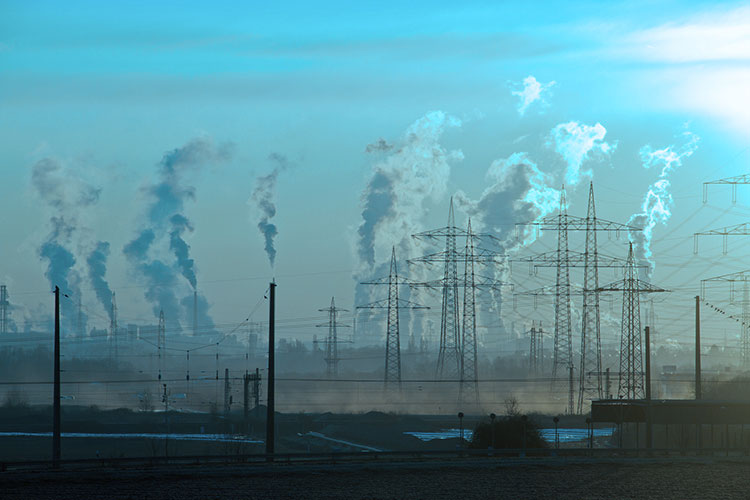
German Energy Solutions Initiative of the Federal Ministry for Economic Affairs and Climate Action
The RES Project South Africa is supported by the German Federal Ministry for Economic Affairs and Climate Action (BMWK) as part of the Renewable Energy Solutions Programme of the German Energy Solutions Initiative.
German Energy Agency (dena)
German Energy Solutions Initiative
Renewable Energy Solutions Programme (RES Programme)
Links

Targeted shutdown of the power grid in South Africa
Due to poor network planning and sluggish management on the part of the main national electricity supplier, South Africa has been struggling with inadequate power supply for years.
In certain areas, the power is sometimes switched off several times a day for two and a half hours without warning. According to forecasts, South Africa’s citizens can expect to be without electricity for up to 12 hours a day in future. Currently, there is even the threat of a complete grid failure, which would mean that essential facilities such as hospitals would no longer be able to operate.
To prevent such a complete breakdown, both companies and private households often resort to diesel generators. In the long term, these are expensive, noisy, harmful to the environment and general health due to their gas and soot emissions.
Compensating for power outages with wind power
In the windy regions of South Africa, small wind turbines are an adequate option for taking the power supply into one’s own hands. In any case, they are the cheaper and more environmentally friendly alternative to diesel generators, which are harmful to health and the environment. Our aim is to anchor this awareness in the South African population.
South Africa’s policy opens up the market
Fortunately, the political attitude towards the use of renewable energies has turned 180 degrees. This paves the way not only for photovoltaic systems, but also for the installation of wind turbines. Another positive development is that Cape Town’s new policy, for example, allows surplus electricity to be sold to neighbours or fed into the grid.
The task is now to make up for years of political neglect and to get the citizens of South Africa excited about renewable energies and small wind turbines.
LuvSide will install four LS Double Helix 1.0 small wind turbines in South Africa, for the first time, in early 2024 with the support of the Renewable Energy Solutions Program (RES-Program) of the German Energy Export Initiative funded by the Federal Ministry for Economic Affairs and Climate Action (BMWK). The four turbines are in the popular V&A Waterfront in Cape Town and are therefore visible to a wide national and international audience.
With the four LS Double Helix 1.0 small wind turbines installed on behalf of our customer, V&A Waterfront Holdings (Pty) ltd in Cape Town, we want to generate enthusiasm among South Africa’s population for this sustainable, low-noise and visually attractive way of generating electricity.
Benefits of our LS Double Helix 1.0 Turbines
- Energy yield per LS Double Helix 1.0 turbine: approx. 1.000 kWh/year
- CO2 savings per LS Double Helix 1.0 turbine: approx. 420 kg per year/turbine
Links
Wind power in the 1-10 kW power class
Decentralized power generation using wind power in the 1-10 kW power class is a solution for municipalities, companies and private households to achieve independence from the central power grid.
For the windy regions around South Africa, wind turbines with battery storage are an ideal backup power source. They work day and night and can be combined with solar systems and home storage to create a self-sufficient power source.
Vertical axis small wind turbines
Savonius wind turbines have been rethought and redeveloped by LuvSide. Slats increase the efficiency by 25%. Our visually attractive Savonius turbines have been tested in strong winds and can be installed in the immediate vicinity of people, as they have been proven to operate very quietly. That is unique! LuvSide currently sells three vertical-axis models in different performance classes.
Our vertical axis turbine models
Horizontal axis small wind turbines
Our significantly more powerful, horizontal-axis LS HuraKan 8.0 small wind turbine delivers a rated output of up to 8.0 kW. This makes it a real workhorse and should therefore be of interest to a much larger target group. With our LS HuraKan 8.0, we can supply environmentally friendly electricity from wind power to areas that require more power and where visual appearance plays a secondary role.
Our horizontal axis turbine models
Sustainable electricity for South Africa’s citizens!
The weather and wind conditions in South Africa can be extreme. At a height of around 60 meters, for example, the average wind speed in Cape Town is 6.59-8.64 m/s. At the installation height of our turbines (10-22 meters) there are still stable wind speeds.
Highlights
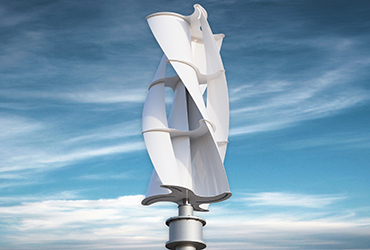
Vertical axis model series Helix
Slats increase the efficiency by 25%
Uniquely low-noise and therefore also suitable for residential areas
No disturbing shadow flickers
Safe for birds and bats due to low rotation
Energy yield per LS Double Helix 1.0 turbine: approx. 1.000 kWh/year
CO2 savings per LS Double Helix 1.0 turbine: approx. 420 kg per year/turbine
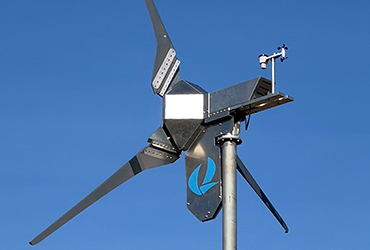
Horizontal axis model series HuraKan
Powerful, robust "workhorse"
Efficient operation at full load even in strong winds
Flexible blade suspension reacts to overload by reducing the angle of attack
Energy yield per LS HuraKan 8.0 turbine: approx. 12,000 kWh/year (at an average wind speed of 6 m/s)
CO2 saved per year/turbine: approx. 2800 kg
Wind Energy uncomplicated and unbureaucratic
For a few years now, South Africa’s policy has been strongly committed to renewable energies. Citizens are given easy access to small wind turbines thanks to a low bureaucratic approval process.
The size of our wind turbines is the perfect compromise between power output and the generally limited space available in cities or on private land. As long as the height of our turbines (approx. 10-22 meters) does not exceed the maximum permissible construction height, a simple building permit is usually sufficient. In addition, our turbines are low-maintenance and therefore particularly user-friendly in operation.
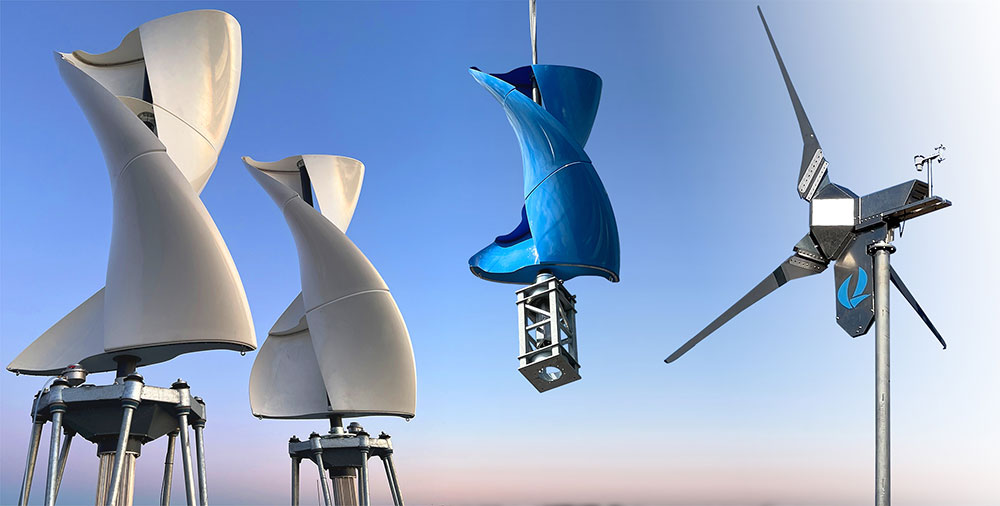

The RES project South Africa in the media
- MSN: "New wind turbines at V&A Waterfront, a German firm’s pilot project"
- Engineering News: "V&A Waterfront pilots ‘aesthetically pleasing’ small-scale wind turbines"
- news24: "New oddly-shaped turbines at Waterfront catch wind from any direction"
- bizcommunity: "LuvSide brings vertical wind turbines to SA, scouting for local partners"
- Independent Online (IOL): "New wind turbines at V&A Waterfront, a German firm’s pilot project"
- Cape(town)etc: "Look: V&A Waterfront to turn wind into power with small turbines"
- Cape Argus Early: "New wind turbines at V&A Waterfront, a German firm’s pilot project"
- Waterfront Neighbourhood News: "LuvSide GmbH launches Wind Energy Pilot Project in the Waterfront"
- Asset Magazin: "LuvSide Africa: Harnessing wind power for energy security on the journey to net zero"
